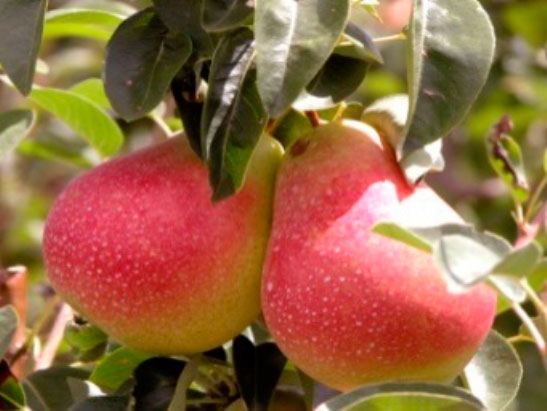Pear orchards in Victoria’s Goulburn Valley are being redeveloped and expanded using better varieties and modern planting systems.
In recent years many of the Valley’s traditional pear orchards were removed due to a decline in the processing industry, but now new, fresh-market varieties—grown using modern high-density planting and training techniques—are opening new opportunities for pear producers.
Innovations in pear production practices
These new innovations in production practices are being showcased at The Pear Field Laboratory located at the Horticulture Centre of Excellence (photo 1), Victorian Department of Environment & Primary Industries, Tatura.
Victorian pear producers face several challenges in regaining competitiveness in response to changes in the marketplace, local economies and climate factors.
Research conducted at the Pear Lab aims to help growers redevelop a profitable industry.
Efficient irrigation systems
Efficient irrigation systems, like drip, are an integral component of modern pear orchards.
However, many growers express concern that smaller soil wetting patterns under drip irrigation compared with microjet systems could compromise tree development and productivity.
Orchards in the Goulburn Valley have historically installed microjet irrigation systems in preference to drip. Few pear orchards currently use drip irrigation but the number is slowly increasing.
A large wetted root volume under microjet irrigation has been shown to increase tree vigour and this may be desirable in young orchards so that trees quickly fill their allotted area. However, strong vegetative growth may be undesirable for precocity and water use efficiency.
High rates of vegetative growth are also undesirable in most mature high-density planting systems. Studies in peach and grape at DEPI Tatura showed that a small wetted root volume reduces vigour, and drip irrigation has been suggested as a tool to increase precocity.
Irrigation trial
An irrigation trial using young pear trees at DEPI Tatura was established in 2012 to investigate the effects of wetted volume (imposed by a combination of irrigation system and irrigation frequency) on:
- irrigation requirements
- tree growth
- water status.
Drip and microjet irrigation at standard and pulse intervals were compared using a new red-blushed pear cultivar, branded Lanya® (Pyrus communis L. ‘ANP-0118’), grafted to BP-1 rootstock.
Lanya was chosen from the Australian National Pear Breeding Program (ANPB).
Study area
Trees were planted in north-south oriented rows in winter 2012.
Row and tree spacings were 4.5 m and 1.0 m, respectively (planting density of 2,222 trees/ha).
Trees were trained with four leaders on an Open Tatura trellis where trees within a row were diagonally offset 0.25 m from the row centre.
Soil in the planting is Red Sodosol, a duplex red-brown earth consisting of 0.2 m deep sandy loam topsoil overlying a medium clay.
Irrigation treatments
Two irrigation systems (drip and microjet) and two irrigation intervals (standard and pulse) were established and treatments were imposed in the 2012–13 (year 1) and 2013–14 (year 2) growing seasons.
Drip irrigation was applied by a single lateral located in the centre of the row with drip emitters delivering 1.75L/h and spaced at 0.5 m.
Microjet irrigation treatments were applied by a single lateral located in the centre of the row with microjet emitters delivering 32 L/h, spaced at 2 m midway between two trees and approximately 0.3 m above the soil surface.
- Continued next month -
For more information, see Tree Fruit September 2014




















